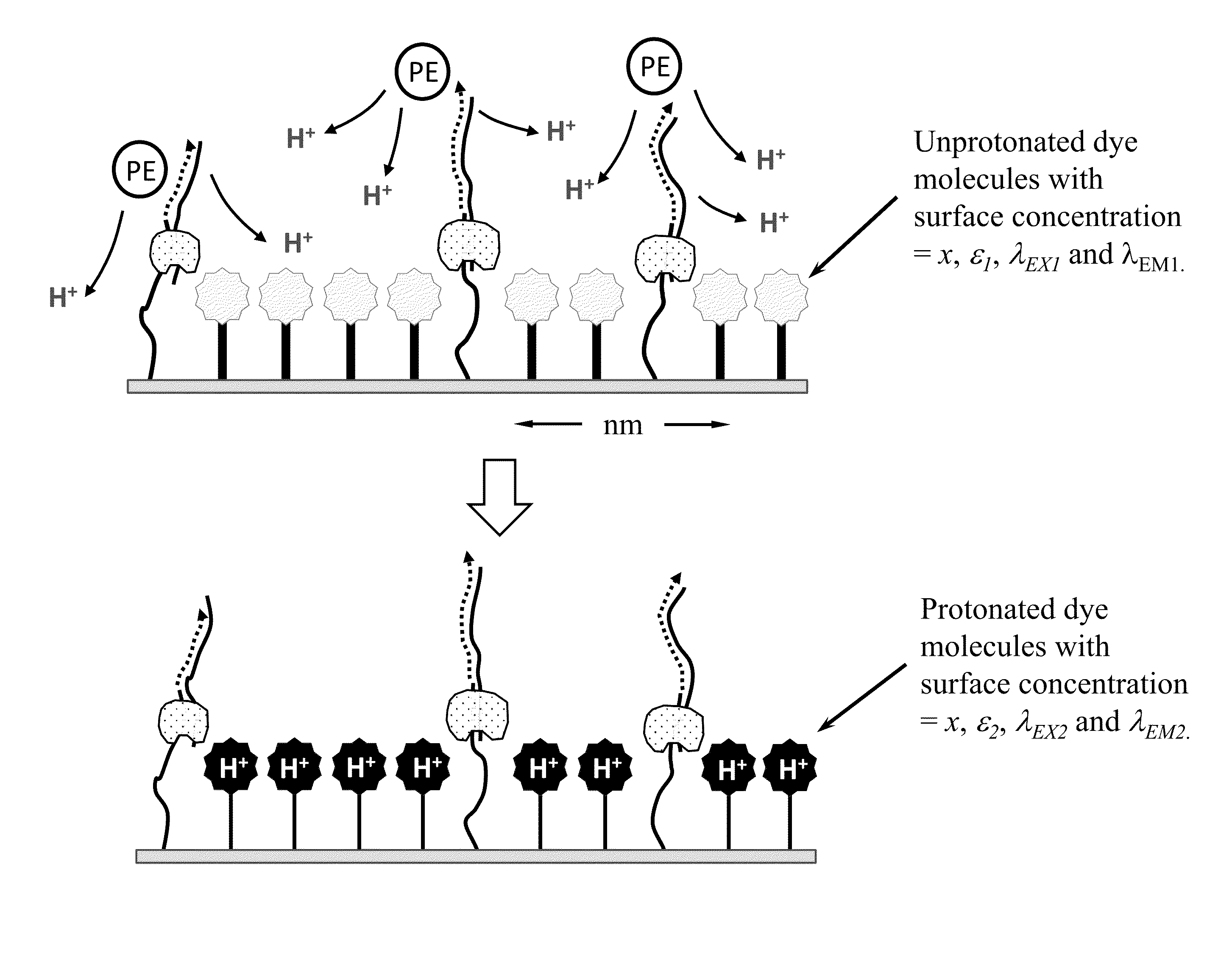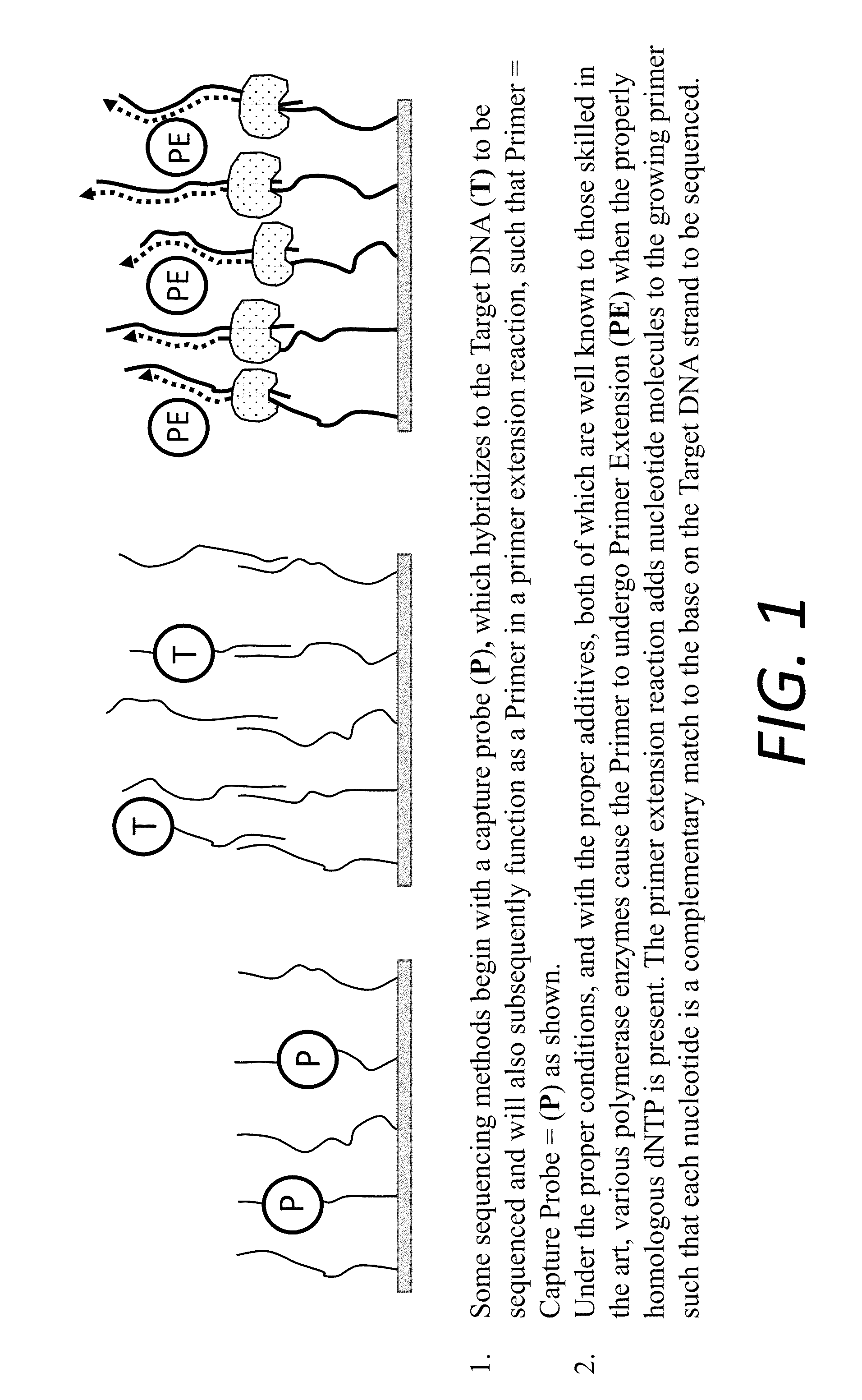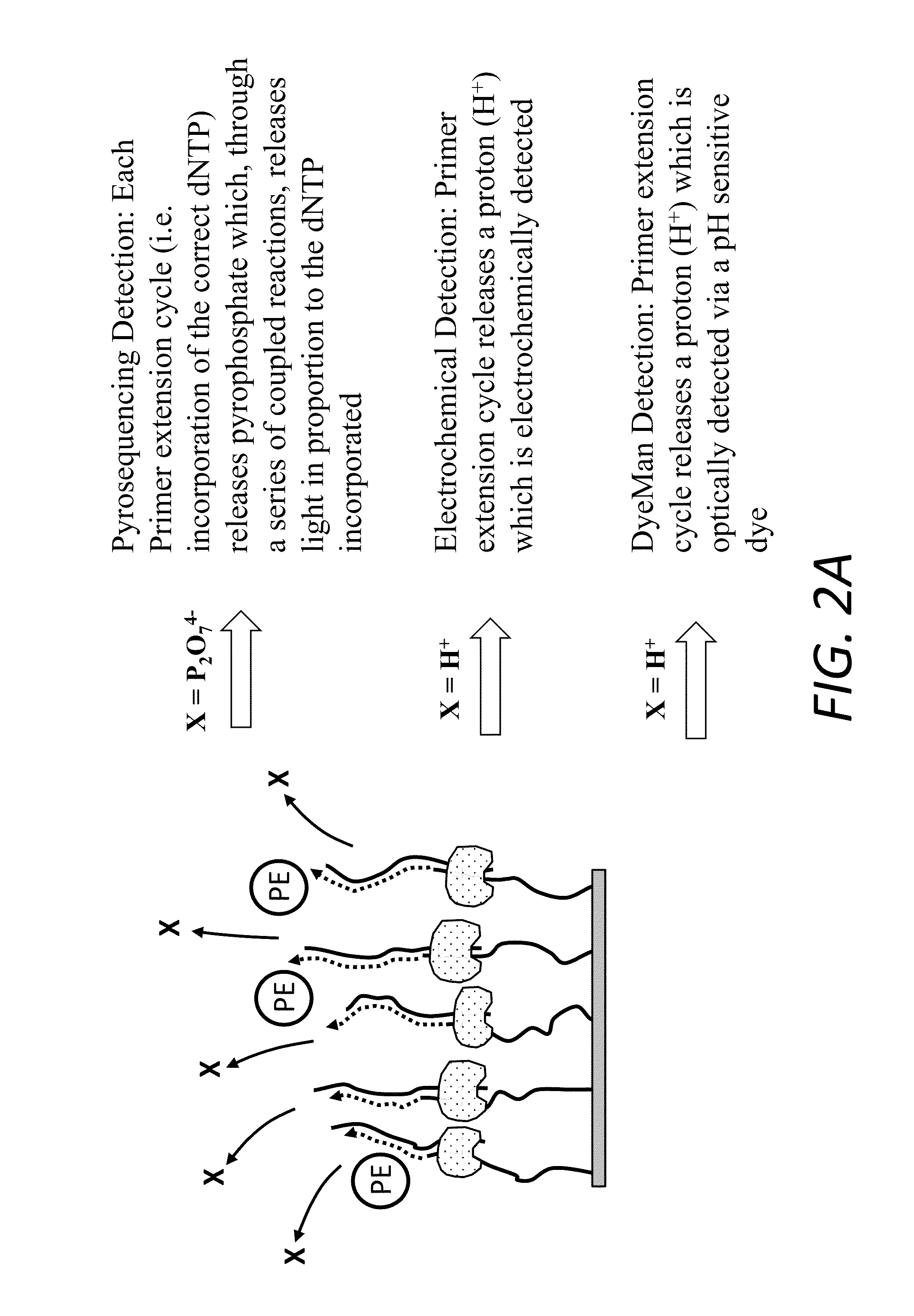Nucleic acid sequencing technique using a pH-sensing agent
a technology of ph-sensing agent and nucleic acid, which is applied in the field of nucleic acid sequencing technique using ph-sensing agent, can solve the problems of high cost of special labeled chemicals and reagents required in the single molecule-based system, high cost of sequencing information, and laborious process
- Summary
- Abstract
- Description
- Claims
- Application Information
AI Technical Summary
Benefits of technology
Problems solved by technology
Method used
Image
Examples
example
[0069]The following illustrative example of using a system of the present invention to sequence a DNA molecule, should not be construed to limit the scope of the invention in any way as many variants of the following procedures will be obvious to those skilled in the art:[0070](A) A DNA sample (target), which may be prepared by many different methods, is readied for sequencing analysis by hybridizing the target to be sequenced to a capture probe / primer on the solid surface or bead surface and adding polymerase and other necessary reagents to give a PTP complex; only one DNA sequence, but many copies, is normally present on any given region or bead; alternatively, the DNA to be sequenced could be bound directly to the surface through covalent, electrostatic or hydrogen bonding interactions and the primer supplied to the solution;[0071](B) Nearby the PTP complex, and preferably bonded to the same solid surface or bead surface as the PTP complex, a pH-sensing dye molecule is attached s...
first embodiment
the invention includes a composition for sequencing nucleic acids including:
[0082](g) a solid surface comprising a reactive group;[0083](h) a strand of nucleic acid[0084](i) a pH-sensing agent;[0085](j) a nucleic acid polymerase;[0086](k) at least one dNTP reagent; and[0087](l) a reaction solution.
second embodiment
A second embodiment includes the composition of the first embodiment, where the solid surface is selected from agarose, silica, organic polymers, glass, inorganic materials, phosphors, clay and combinations thereof.
A third embodiment includes the composition of the first embodiment, wherein the reactive group is selected from C—OH, —CO2H, —NH2, —SH, —CONH2, —CO2CH3, epoxides R2—C(O)C—R2, C—X (where R═H or any alkyl or aryl group), alcohols, carboxylic acids, organic esters, amides, amines, alky or aryl halides, sulfates, phosphates, silanols, hydroxide or combinations thereof.
PUM
| Property | Measurement | Unit |
|---|---|---|
| molecular diameter | aaaaa | aaaaa |
| pH | aaaaa | aaaaa |
| pH- | aaaaa | aaaaa |
Abstract
Description
Claims
Application Information
 Login to View More
Login to View More - R&D
- Intellectual Property
- Life Sciences
- Materials
- Tech Scout
- Unparalleled Data Quality
- Higher Quality Content
- 60% Fewer Hallucinations
Browse by: Latest US Patents, China's latest patents, Technical Efficacy Thesaurus, Application Domain, Technology Topic, Popular Technical Reports.
© 2025 PatSnap. All rights reserved.Legal|Privacy policy|Modern Slavery Act Transparency Statement|Sitemap|About US| Contact US: help@patsnap.com



